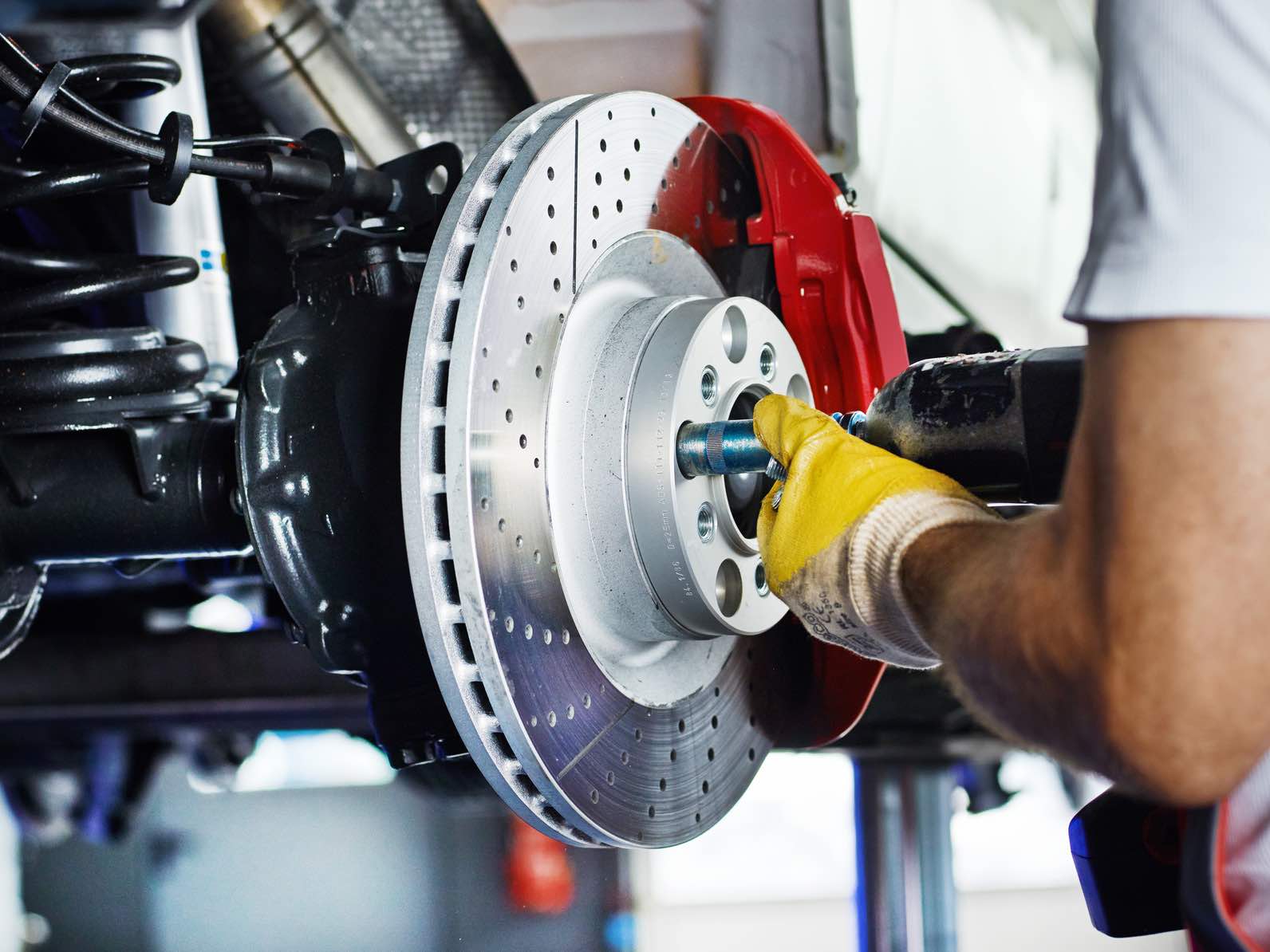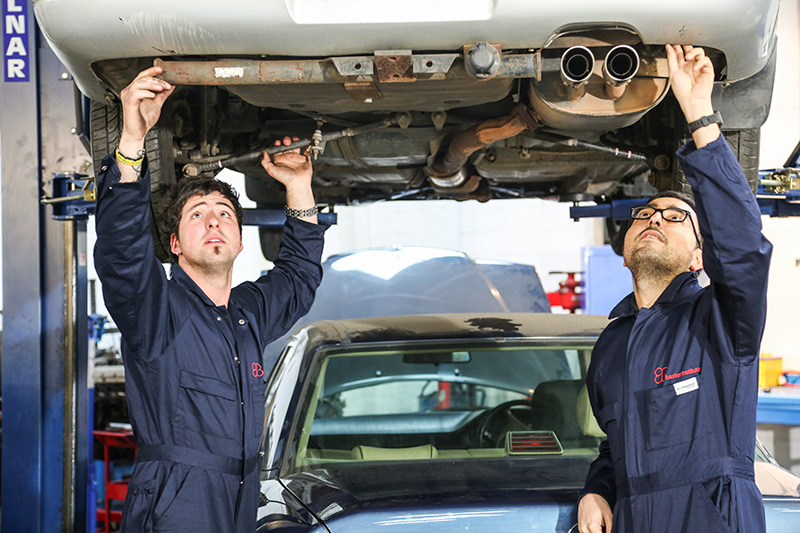
11 Courses

Certificate IV in Automotive Mechanical Diagnosis
AUR40216 (CIV AMD) Term 3 | AURTTA121 - Diagnose complex system faults
This unit describes the skills and knowledge required to diagnose faults in complex vehicle, vessels or machinery systems to determine the repair action necessary to restore system performance. It involves confirming the existence of a complex system fault, developing a diagnostic testing strategy, diagnosing the cause of the fault reporting conclusions, and making repair recommendations. A complex system integrates two or more automotive systems, or incorporates three or more mechanical, hydraulic, pneumatic, electrical or electronic sub-systems. Examples include electronically controlled automatic transmissions, anti-lock braking systems, and engine management systems integrating ignition, fuel and transmission control systems.

Certificate IV in Automotive Mechanical Diagnosis
AUR40216 (CIV AMD) Term 3 | AURETR137 - Diagnose complex faults in light vehicle safety systems
This unit describes the skills and knowledge required to diagnose complex faults in light vehicle or light commercial vehicle embedded network safety systems and determine the repair action necessary to restore system performance. The systems used vary based on the work context. It involves confirming the existence of a fault, developing a diagnostic testing strategy, diagnosing the cause of the fault, reporting conclusions and making repair recommendations. Complex faults are outside the normal scope of a technician’s diagnosis and repair work. They include intermittent faults, multi-system faults, faults introduced as a result of system repairs, and indirect faults caused by the influence of external systems, requiring the application of complex diagnostic processes to resolve.

Certificate IV in Automotive Mechanical Diagnosis
AUR40216 (CIV AMD) Term 3 | AURLTB104 - Diagnose complex faults in light vehicle braking systems
This unit describes the skills and knowledge required to diagnose complex faults in light vehicle braking systems and determine the repair action necessary to restore system performance. It involves confirming the existence of a fault, developing a diagnostic testing strategy, diagnosing the cause of the fault, reporting conclusions and making repair recommendations. Complex faults are outside the normal scope of a technician’s diagnosis and repair work. They include intermittent faults, multi-system faults, faults introduced as a result of system repairs, and indirect faults caused by the influence of external systems, requiring the application of complex diagnostic processes to resolve.

Certificate IV in Automotive Mechanical Diagnosis
AUR40216 (CIV AMD) Term 3 | AURLTD109 - Diagnose complex faults in light vehicle steering and suspension systems
This unit describes the skills and knowledge required to diagnose complex faults in light vehicle steering and suspension systems and determine the repair action necessary to restore system performance. It involves confirming the existence of a fault, developing a diagnostic testing strategy, diagnosing the cause of the fault, reporting conclusions and making repair recommendations. Complex faults are outside the normal scope of a technician’s diagnosis and repair work. They include intermittent faults, multi-system faults, faults introduced as a result of system repairs, and indirect faults caused by the influence of external systems, requiring the application of complex diagnostic processes to resolve.

Certificate IV in Automotive Mechanical Diagnosis
AUR40216 (CIV AMD) Term 1 | AURLTE104 - Diagnose complex faults in light vehicle petrol engines
This unit describes the skills and knowledge required to diagnose complex faults in light vehicle petrol engines and determine the repair action necessary to restore system performance. It involves confirming the existence of a fault, developing a diagnostic testing strategy, diagnosing the cause of the fault, reporting conclusions and making repair recommendations. Complex faults are outside the normal scope of a technician’s diagnosis and repair work. They include intermittent faults, multi-system faults, faults introduced as a result of system repairs, and indirect faults caused by the influence of external systems, requiring the application of complex diagnostic processes to resolve.

Certificate IV in Automotive Mechanical Diagnosis
AUR40216 (CIV AMD) Term 2 | AURLTE105 - Diagnose complex faults in light vehicle diesel engines
This unit describes the skills and knowledge required to diagnose complex faults in light vehicle diesel engines and determine the repair action necessary to restore system performance. It involves confirming the existence of a fault, developing a diagnostic testing strategy, diagnosing the cause of the fault, reporting conclusions and making repair recommendations. Complex faults are outside the normal scope of a technician’s diagnosis and repair work. They include intermittent faults, multi-system faults, faults introduced as a result of system repairs, and indirect faults caused by the influence of external systems, requiring the application of complex diagnostic processes to resolve.

Certificate IV in Automotive Mechanical Diagnosis
AUR40216 (CIV AMD) Term 2 | AURLTX104 - Diagnose complex faults in light vehicle automatic transmission and driveline systems
This unit describes the skills and knowledge required to diagnose complex faults in light vehicle automatic transmission and driveline systems, including drive shafts and final drives, and determine the repair action necessary to restore system performance. It involves confirming the existence of a fault, choosing the diagnostic procedure and tools, applying the diagnostic procedure, reporting conclusions and making repair recommendations. Complex faults are outside the normal scope of a technician’s diagnosis and repair work. They include intermittent faults, multi-system faults, faults introduced as a result of system repairs, and indirect faults caused by the influence of external systems, requiring the application of complex diagnostic processes to resolve.

Certificate IV in Automotive Mechanical Diagnosis
AUR40216 (CIV AMD) Term 2 | AURTTA125 - Diagnose complex faults in vehicle integrated stability control systems
This unit describes the skills and knowledge required to diagnose complex faults in vehicle integrated stability control systems and determine the repair action necessary to restore system performance. It involves confirming the existence of a fault, developing a diagnostic testing strategy, diagnosing the cause of the fault, reporting conclusions and making repair recommendations. Complex faults are outside the normal scope of a technician’s diagnosis and repair work. They include intermittent faults, multi-system faults, faults introduced as a result of system repairs, and indirect faults caused by the influence of external systems, requiring the application of complex diagnostic processes to resolve.

Certificate IV in Automotive Mechanical Diagnosis
AUR40216 (CIV AMD) Term 2 | AURTTR101 - Diagnose complex faults in engine management systems
This unit describes the skills and knowledge required to diagnose complex faults in engine management systems and identifying the repair action necessary to restore system performance. The systems used vary based on the work context. It involves confirming the existence of a fault, developing a diagnostic testing strategy, diagnosing the cause of the fault, reporting conclusions and making repair recommendations. Complex faults are outside the normal scope of a technician’s diagnosis and repair work. They include intermittent faults, multi-system faults, faults introduced as a result of system repairs, and indirect faults caused by the influence of external systems, requiring the application of complex diagnostic processes to resolve.

Certificate IV in Automotive Mechanical Diagnosis
AUR40216 (CIV AMD) Term 2 | BSBSTR401 - Promote innovation in team environments
This unit describes the skills and knowledge required to identify and implement ways of promoting innovation within team environments in the workplace.
Certificate IV in Automotive Mechanical Diagnosis
AUR40216 (CIV AMD) Term 2 (2023) | AURETU006 - Diagnose complex faults in air conditioning and HVAC systems
This unit describes the performance outcomes required to diagnose complex faults in air conditioning and heating, ventilation and air conditioning (HVAC) systems and determine the repair action necessary to restore system performance. It involves confirming the existence of a fault, choosing the diagnostic procedure and tools, applying the diagnostic procedure, reporting conclusions and making repair recommendations.
Complex faults are outside the normal scope of a technician’s diagnosis and repair work. They include intermittent faults, multi-system faults, faults introduced as a result of system repairs, and indirect faults caused by the influence of external systems, requiring the application of complex diagnostic processes to resolve.
.png)